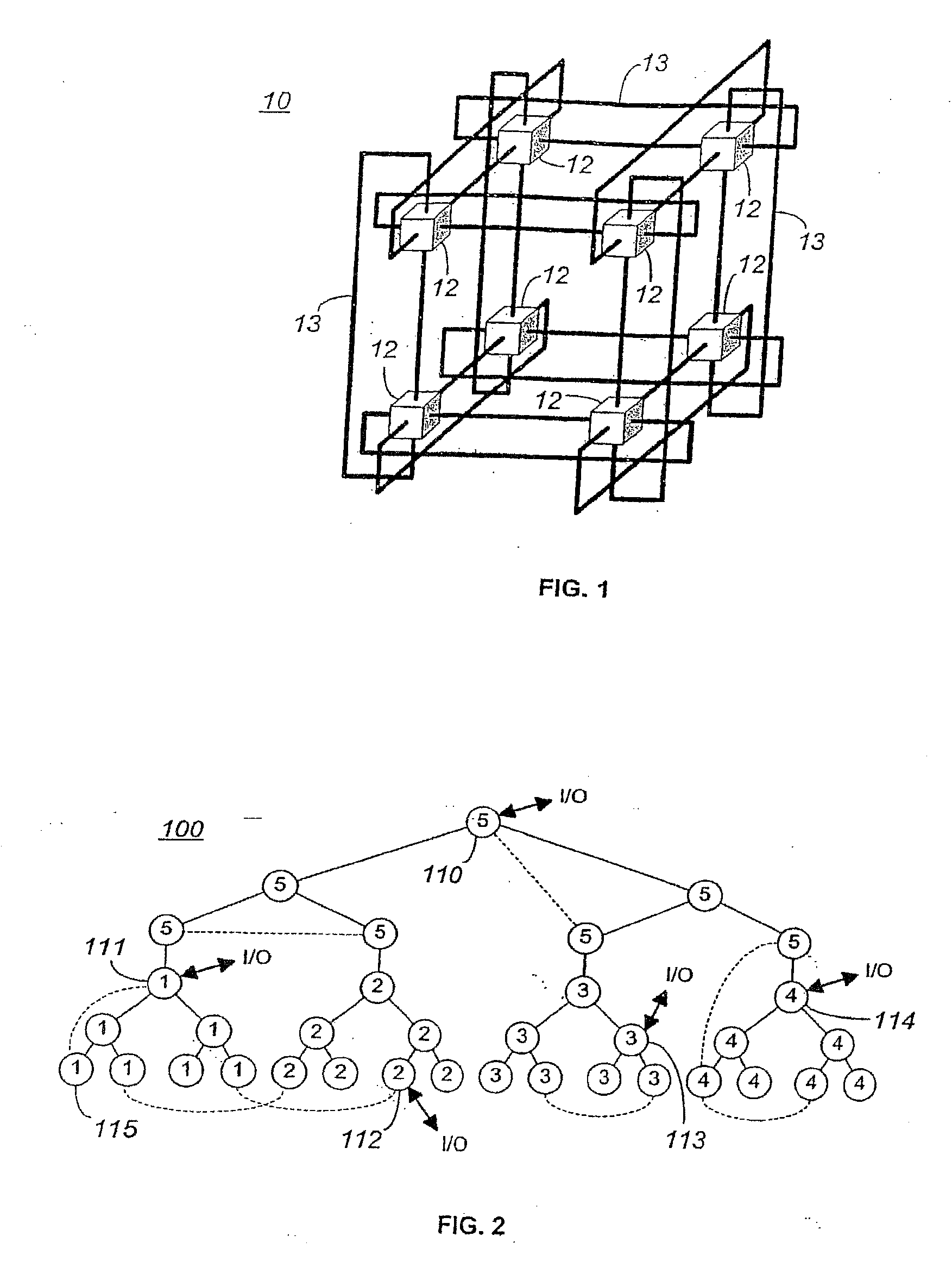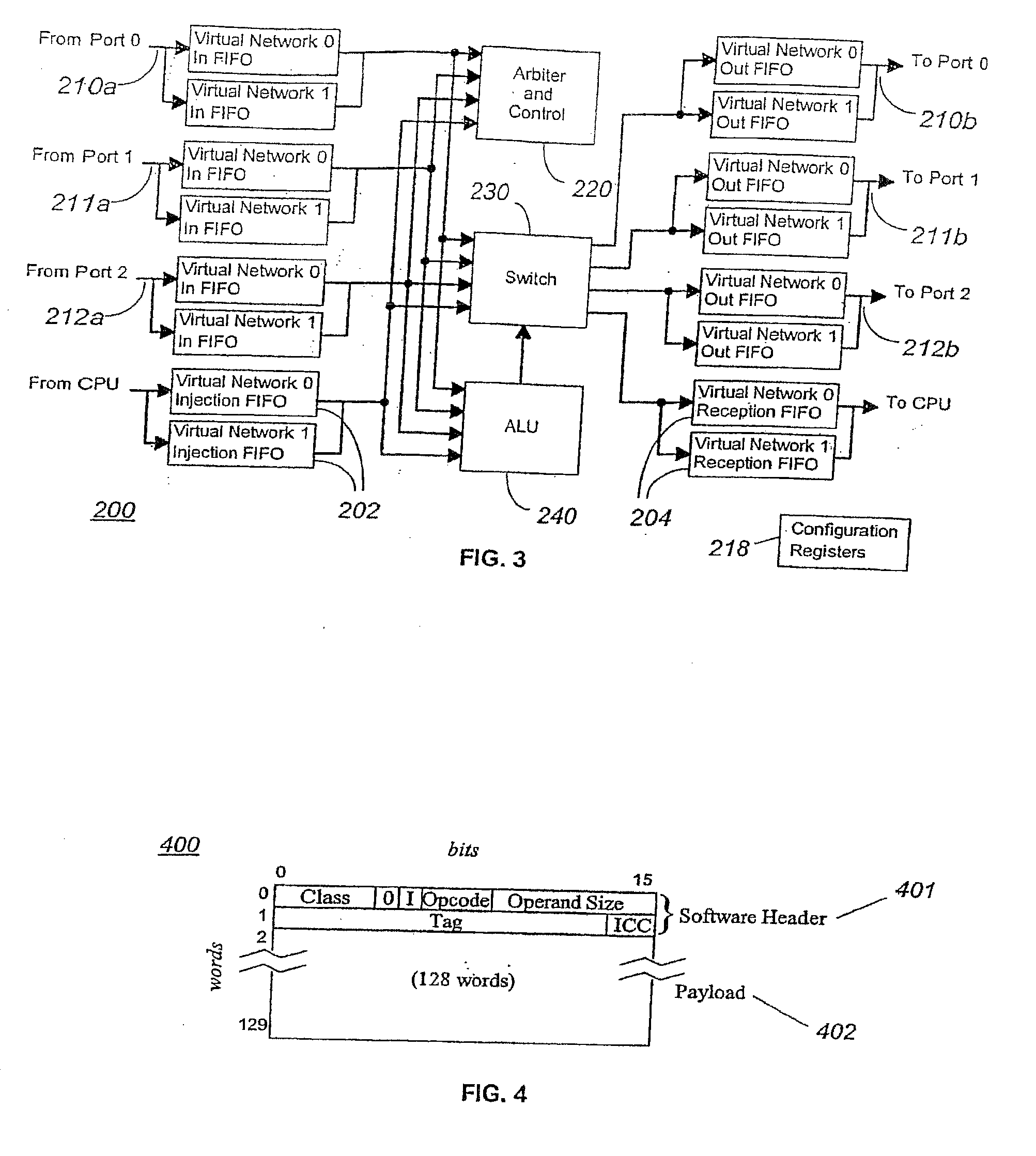Collective Network For Computer Structures
a computer structure and network technology, applied in data switching networks, instruments, multi-processing architectures, etc., can solve the problems of insufficient processing power for software treatment to keep up with network bandwidth, inefficient computation, and inability to implement collective computation in the hardware of conventional networks, etc., to achieve efficient and reliable computation global reductions and limited resources
- Summary
- Abstract
- Description
- Claims
- Application Information
AI Technical Summary
Benefits of technology
Problems solved by technology
Method used
Image
Examples
Embodiment Construction
[0025]The present invention may be implemented in a computer structure such as described in herein-incorporated, commonly-owned, co-pending U.S. patent application Publication No. US 2004 / 0103218 A1, which describes a novel Massively Parallel Supercomputer architecture in the form of a three-dimensional torus designed to deliver processing power on the order of teraOPS (trillion floating-point operations per second) for a wide range of applications. The Massively Parallel supercomputer architecture, in the exemplary embodiment described, comprises 65,536 processing nodes organized as a 64×32×32 three-dimensional torus with each processing node connected to six (6) neighboring nodes. FIG. 1 shows such a torus consisting of eight (8) nodes 12, and it is clear to see how this interconnect scales by increasing the number of nodes 12 along all three dimensions. With current technology, this architecture can be leveraged to hundreds of teraOPS for applications that require significantly m...
PUM
 Login to View More
Login to View More Abstract
Description
Claims
Application Information
 Login to View More
Login to View More - R&D
- Intellectual Property
- Life Sciences
- Materials
- Tech Scout
- Unparalleled Data Quality
- Higher Quality Content
- 60% Fewer Hallucinations
Browse by: Latest US Patents, China's latest patents, Technical Efficacy Thesaurus, Application Domain, Technology Topic, Popular Technical Reports.
© 2025 PatSnap. All rights reserved.Legal|Privacy policy|Modern Slavery Act Transparency Statement|Sitemap|About US| Contact US: help@patsnap.com



